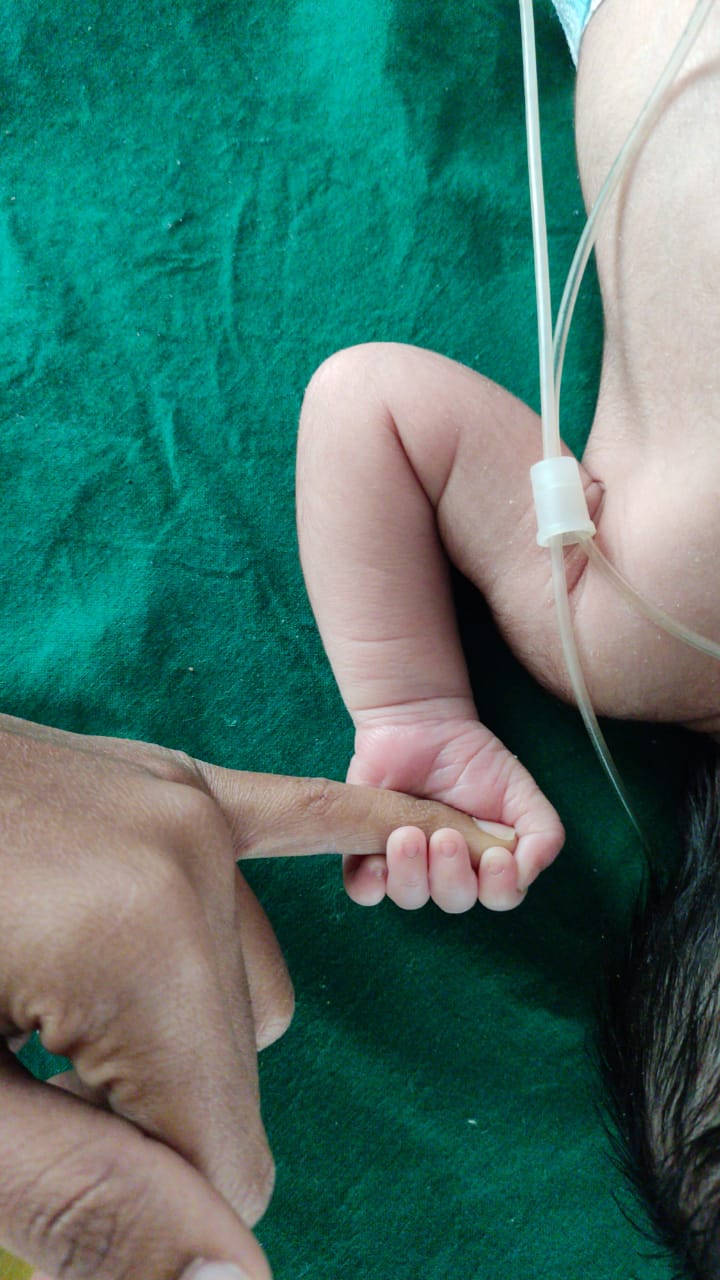[1]
Sherer DM. Fetal grasping at 16 weeks' gestation. Journal of ultrasound in medicine : official journal of the American Institute of Ultrasound in Medicine. 1993 Jun:12(6):316
[PubMed PMID: 8515527]
[2]
Petrikovsky BM, Kaplan GP. Fetal grasping of the umbilical cord causing variable fetal heart rate decelerations. Journal of clinical ultrasound : JCU. 1993 Nov-Dec:21(9):642-4
[PubMed PMID: 8227396]
[3]
Allen MC, Capute AJ. The evolution of primitive reflexes in extremely premature infants. Pediatric research. 1986 Dec:20(12):1284-9
[PubMed PMID: 3797120]
[4]
Amiel-Tison C, Barrier G, Shnider SM, Levinson G, Hughes SC, Stefani SJ. A new neurologic and adaptive capacity scoring system for evaluating obstetric medications in full-term newborns. Anesthesiology. 1982 May:56(5):340-50
[PubMed PMID: 7072997]
[5]
POLLACK SL. The grasp response in the neonate; its characteristics and interaction with the tonic neck reflex. Archives of neurology. 1960 Nov:3():574-81
[PubMed PMID: 13736833]
[6]
Schott JM, Rossor MN. The grasp and other primitive reflexes. Journal of neurology, neurosurgery, and psychiatry. 2003 May:74(5):558-60
[PubMed PMID: 12700289]
[7]
Shahani B, Burrows PT, Whitty CW. The grasp reflex and perseveration. Brain : a journal of neurology. 1970:93(1):181-92
[PubMed PMID: 5418400]
[8]
De Renzi E, Barbieri C. The incidence of the grasp reflex following hemispheric lesion and its relation to frontal damage. Brain : a journal of neurology. 1992 Feb:115 Pt 1():293-313
[PubMed PMID: 1559160]
[9]
Hashimoto R, Tanaka Y. Contribution of the supplementary motor area and anterior cingulate gyrus to pathological grasping phenomena. European neurology. 1998 Oct:40(3):151-8
[PubMed PMID: 9748673]
[10]
Futagi Y, Toribe Y, Suzuki Y. The grasp reflex and moro reflex in infants: hierarchy of primitive reflex responses. International journal of pediatrics. 2012:2012():191562. doi: 10.1155/2012/191562. Epub 2012 Jun 11
[PubMed PMID: 22778756]
[11]
Milani-Comparetti A, Gidoni EA. Routine developmental examination in normal and retarded children. Developmental medicine and child neurology. 1967 Oct:9(5):631-8
[PubMed PMID: 6066029]
[12]
Ratner AIu, Bondarchuk SV. [Neurologic evaluation of unconditioned reflexes in the newborn]. Pediatriia. 1990:(4):38-41
[PubMed PMID: 2371124]
[13]
Zafeiriou DI, Tsikoulas IG, Kremenopoulos GM. Prospective follow-up of primitive reflex profiles in high-risk infants: clues to an early diagnosis of cerebral palsy. Pediatric neurology. 1995 Sep:13(2):148-52
[PubMed PMID: 8534280]
[14]
Etcharry-Bouyx F, Le Gall D, Allain P, Mercier P, Aubin G, Emile J. [Incidence of grasping and its relationship to cerebral lesions]. Revue neurologique. 2000 Nov:156(11):977-83
[PubMed PMID: 11119049]
[15]
Little WJ. On the influence of abnormal parturition, difficult labours, premature birth, and asphyxia neonatorum, on the mental and physical condition of the child, especially in relation to deformities. Clinical orthopaedics and related research. 1966 May-Jun:46():7-22
[PubMed PMID: 5950310]
[16]
Wood E. The child with cerebral palsy: diagnosis and beyond. Seminars in pediatric neurology. 2006 Dec:13(4):286-96
[PubMed PMID: 17178359]
